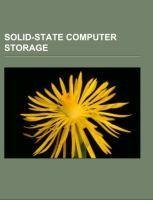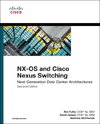
-
 Anglický jazyk
Anglický jazyk
Solid-state computer storage
Autor: Source: Wikipedia
Source: Wikipedia. Pages: 40. Chapters: Aloaha, Bad sector, Flash memory controller, Garbage collection (computer science), IOdrive, Kaminario, List of flash memory controller manufacturers, List of solid-state drive manufacturers, NVM Express, TRIM, Universal... Viac o knihe
Na objednávku, dodanie 2-4 týždne
16.38 €
bežná cena: 18.20 €
O knihe
Source: Wikipedia. Pages: 40. Chapters: Aloaha, Bad sector, Flash memory controller, Garbage collection (computer science), IOdrive, Kaminario, List of flash memory controller manufacturers, List of solid-state drive manufacturers, NVM Express, TRIM, Universal Flash Storage, USB flash drive, USB flash drive security, Violin Memory, Wear leveling, Write amplification. Excerpt: A solid-state drive (SSD) (also known as a solid-state disk or electronic disk, though it contains no actual "disk" of any kind) is a data storage device using integrated circuit assemblies as memory to store data persistently. SSD technology uses electronic interfaces compatible with traditional block input/output (I/O) hard disk drives. SSDs have no moving mechanical components, which distinguish them from traditional electromechanical magnetic disks such as hard disk drives (HDDs) or floppy disks, which contain spinning disks and movable read/write heads. Compared with electromechanical disks, SSDs are typically less susceptible to physical shock, much quieter, have lower access time, and less latency. However, while the price of SSDs has continued to decline in 2012, SSDs are still about 7 to 8 times more expensive per unit of storage than HDDs. Many SSDs use I/O interfaces developed for hard disk drives, thus permitting simple replacement in common applications. As of 2010, most SSDs use NAND-based flash memory, which retains data without power. For applications requiring fast access, but not necessarily data persistence after power loss, SSDs may be constructed from random-access memory (RAM). Such devices may employ separate power sources, such as batteries, to maintain data after power loss. Hybrid drives or solid state hybrid drives (SSHD) combine the features of SSDs and HDDs in the same unit, containing a large hard disk drive and an SSD cache to improve performance of frequently accessed data. These devices may offer near-SSD performance for many applications. SSDs had origins in the 1950s with two similar technologies: magnetic core memory and card capacitor read-only store (CCROS). These auxiliary memory units (as contemporaries called them) emerged during the era of vacuum-tube computers. But with the introduction of cheaper drum storage units their use ceased. Later, in the 1970s and 1980s, SSDs were implemented in semiconductor memory for early supe
- Vydavateľstvo: Books LLC, Reference Series
- Rok vydania: 2015
- Formát: Paperback
- Rozmer: 246 x 189 mm
- Jazyk: Anglický jazyk
- ISBN: 9781233111695

 Nemecký jazyk
Nemecký jazyk 










